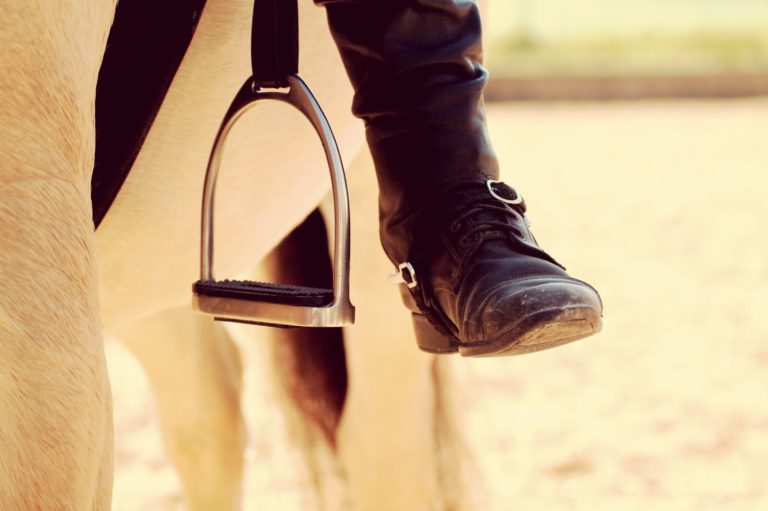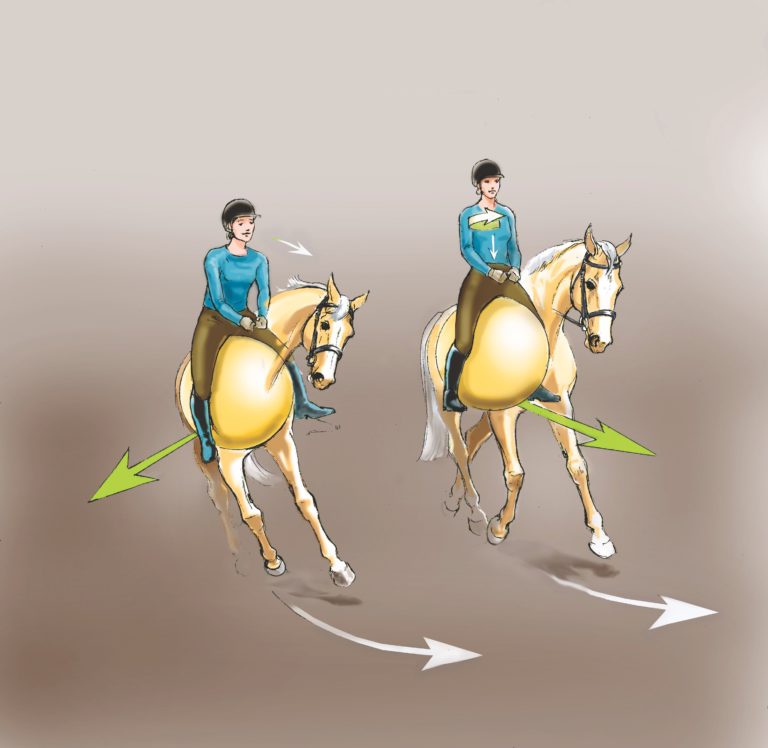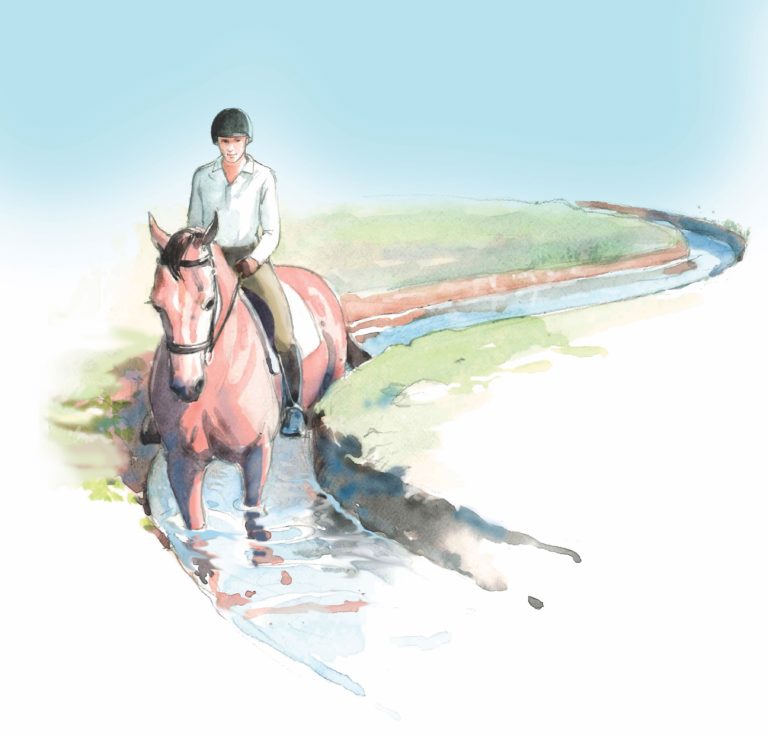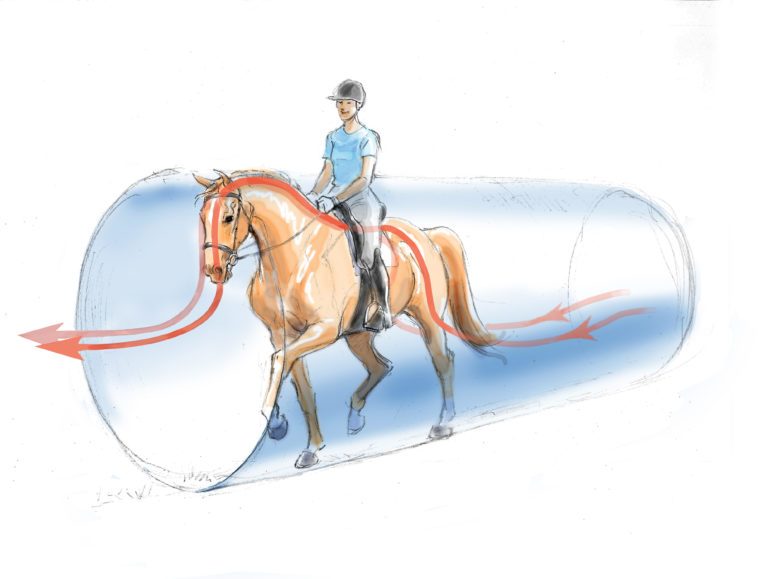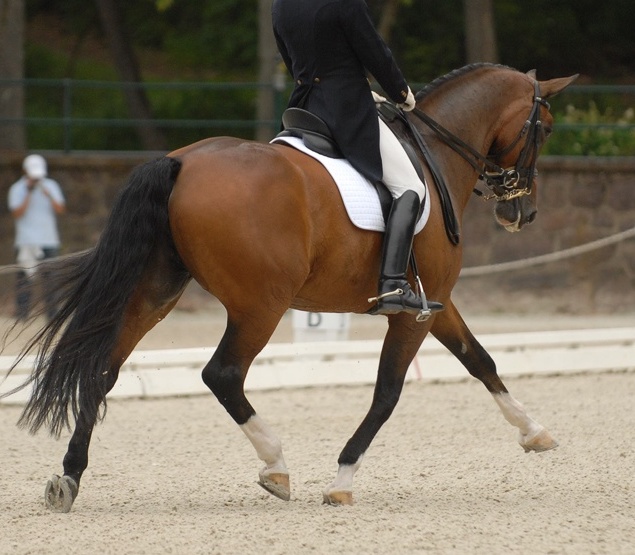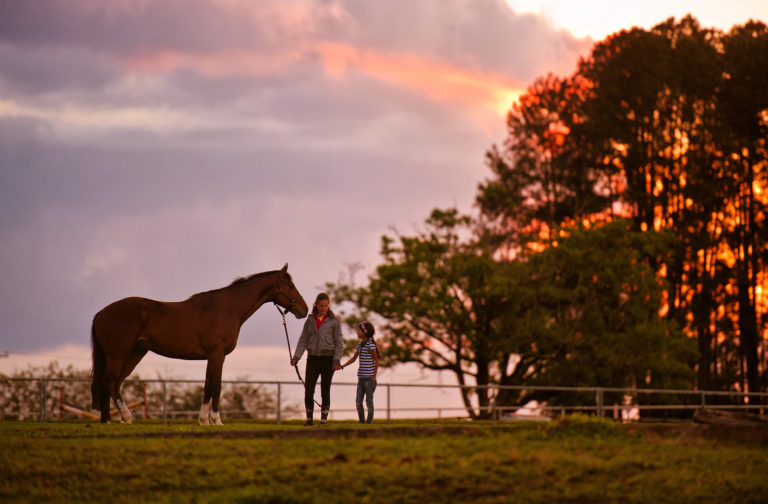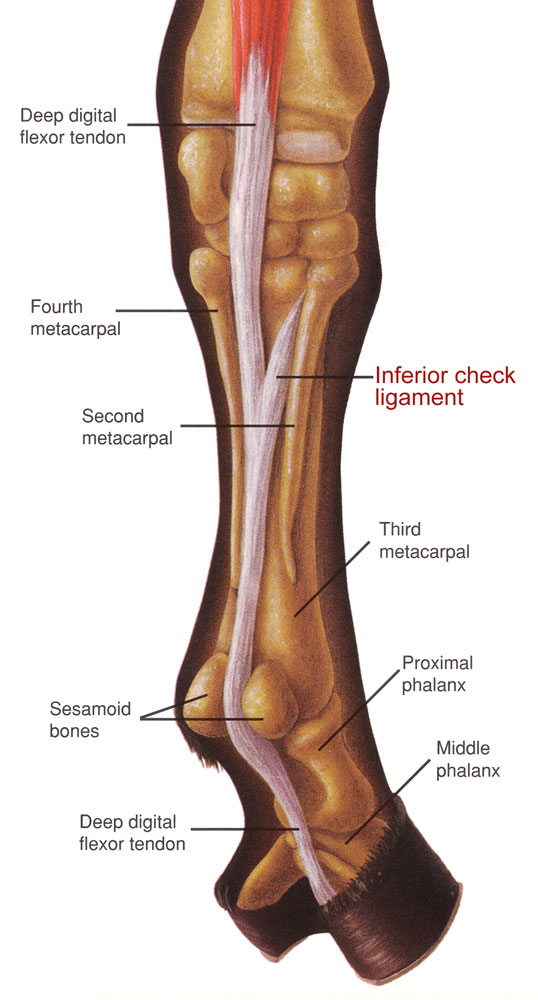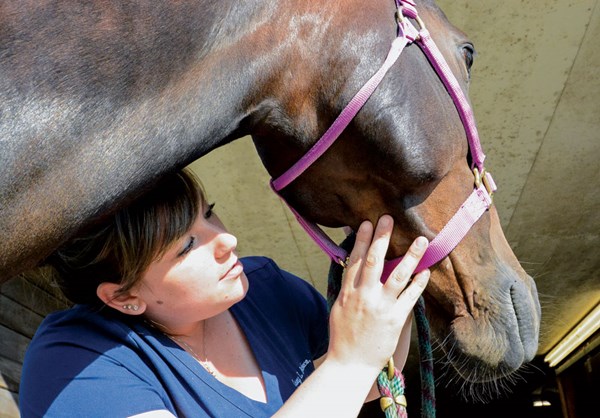Riding in a stretching position is an important part of training not just for young horses or dressage horses, but for all horses regardless of discipline. But it isn’t simple to do it in a way that helps the horse. There aren’t very many horses like Germany’s Damon Jerome NRW who chewed the reins out of the hand from the beginning—like the textbook says. Sometimes, I have to patiently show the horse that I’m riding the way to the hand and down so that the neck falls from the withers and the horse stretches trustingly to my hands.
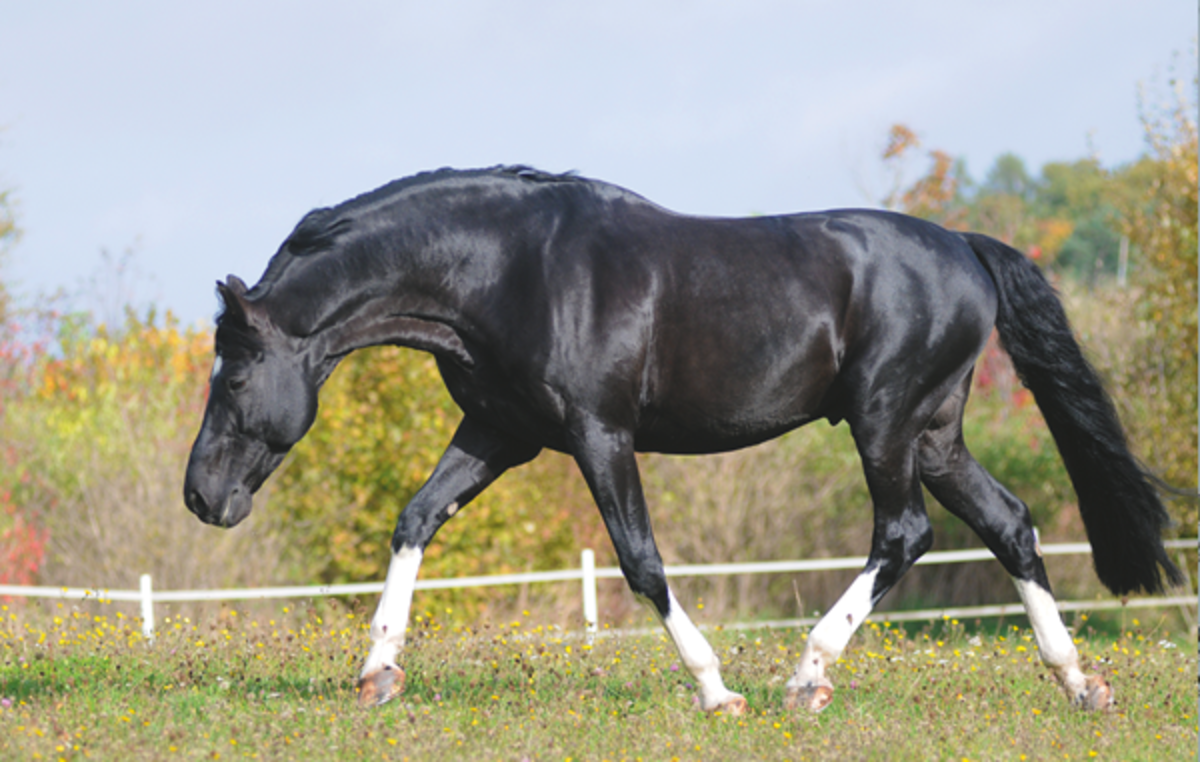
Why is stretching actually so important? Helle Katrine Kleven explains in her book die Biomechnaik der Pferde (Biomechanics and Physiotherapy for Horses) about the biomechanics of horses that the nuchal ligament pulls and straightens the spinous processes of the withers as soon as the horse drops his head. This arches the back up. In this position, horses can carry us almost without strength—passively. In order to unload the forehand, muscles need to take over the function of the nuchal ligament more and more so that the horse develops the strength to carry himself. The goal of training is to strengthen the horse’s body so that he can carry with the carrying muscles. If the muscles aren’t strong enough yet, the horse uses other muscles that aren’t built for carrying in order to compensate. This causes the horse to lose suppleness.
To motivate our horses to travel in a stretching position, I let them chew the reins out of the hand now and then and take care that the horse stays collected behind. I slowly lengthen the reins, ride actively to the hand, introduce the increased stretch to the bit and drive toward it. Ideally, my horse will take the reins out of my hands through the stretch of the neck and the chewing action of the mouth. To take the reins out of the hands means that the horse actively responds when he gets the signal to chew. Many horses deviate from the ideal in that they invert, roll over or go against the hand.
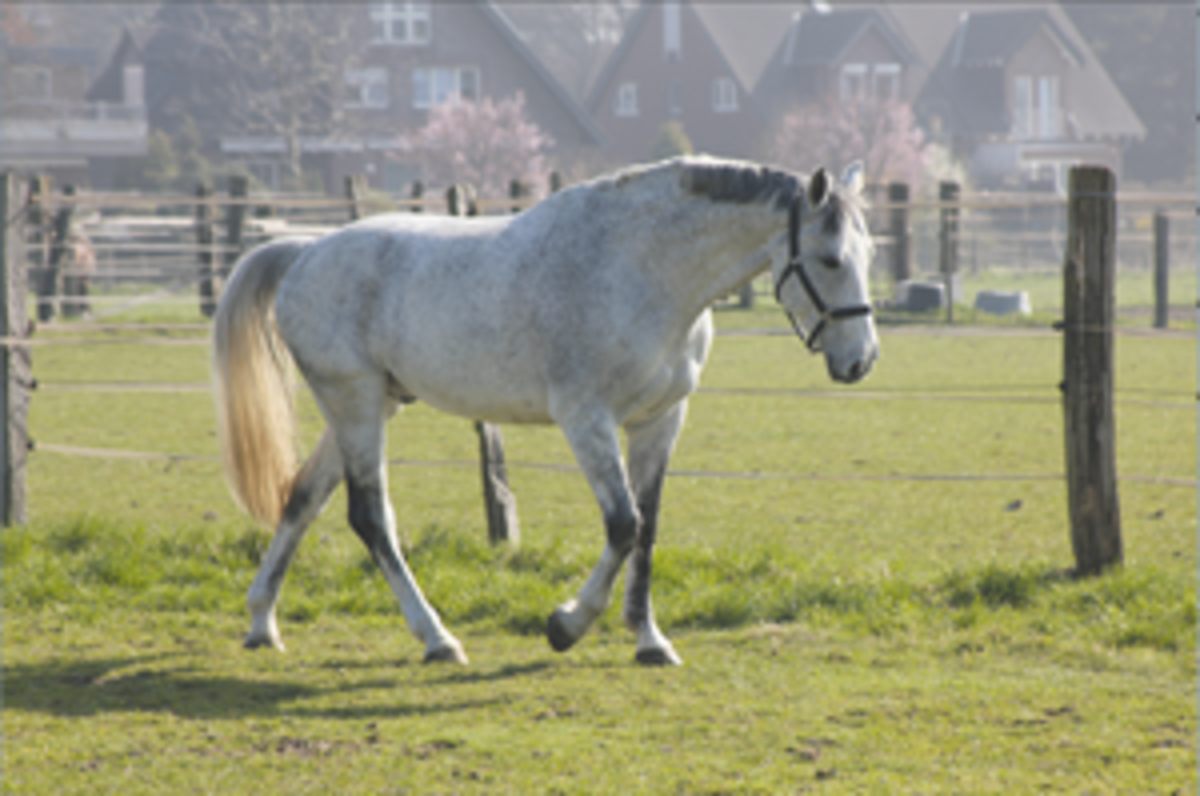

Stretching the Young Horse
As a young horse, it took Helios, now 8, a long time to stretch to the hand. We had to stay patient in showing him the way to the ground, stretching to the hand, and not give up when it took a long time. It is more important to achieve this goal than to work on movements too early. Even if I haven’t achieved anything else other than a good chewing of the reins out of the hand in a whole training session, it doesn’t matter. It is so important for further training, especially regarding good connection, that I never skip this step. Our patience and training program carefully built on stretching have paid off. Today the connection is much more honest. That is because we gave him as much time as he needed. Here are the steps I take to allow Helios to chew the reins out of the hand at the posting trot: First, I let the reins go a little longer and test if Helios’s mouth also goes forward. If he gets narrow and rolls over, I carefully show him the way to the ground by riding curved lines and bringing the inside hand slightly to the inside without working backward. At the same time I increase the drive of my inside leg. As soon as Helios carries the bit, I offer him a fine, constant connection to the hand. In this way he stays collected and continues to step actively from behind to the bit. I keep repeating this until he is honestly stretching to a soft hand with the neck falling from the withers and the nose in front. The nose is ideally already in front of the vertical when I lengthen the rein.
I had to take a completely different path with my previous horse Durbidge. He naturally went in an elevation that wasn’t really honest. A good trainer advised me in a lesson: “Ride him first up to the hand then take the contact to the ground.” I tried it and found that it worked much better. I did it later in the course of training sessions, riding him frequently into a stretching position by often letting him take the reins out of my hands. That led later on to the goal of an honest elevation with good contact and self-carriage. There are many ways to Rome and the right way for one horse can be different than for others.
To check that the stretch is correct, I often ask my colleagues to give me feedback because it is sometimes difficult for me to feel it. It can happen that the horse chews the reins out of the hand, creeps behind the vertical and doesn’t honestly stretch to the bit. Ideally, the horse’s mouth should seek the bit forward and downward. Another problem that can arise is the horse falling apart when chewing the reins out of the hand. This can happen, for example, if the rider stops driving the horse to the bit. When the reins are left long without driving the horse to them, the horse won’t stay collected.
All the positive benefits of chewing the reins are lost. If chewing the reins out of the hand is correctly ridden, the activity of the hind end improves as a general rule and with it contact and relaxation. The horse goes more over the back to the bit and the hind leg reaches actively. The horse should stay active behind in the stretch and he shouldn’t come onto the forehand.


A Model at Stretching
In addition to his career as a show horse, Damon Jerome NRW (“DJ”) is ideal for riding demonstrations at seminars. We started with several judges’ seminars in Warendorf, where international judges studied the practical interpretation of the guidelines using demonstrations and commentary by Christoph Hess of the FN. Practical seminars for members of the FN followed and Damon Jerome NRW always gave a good demonstration. His ability to chew the reins out of the hand in all gaits and immediately adopt a stretching position and stay collected served as a model.
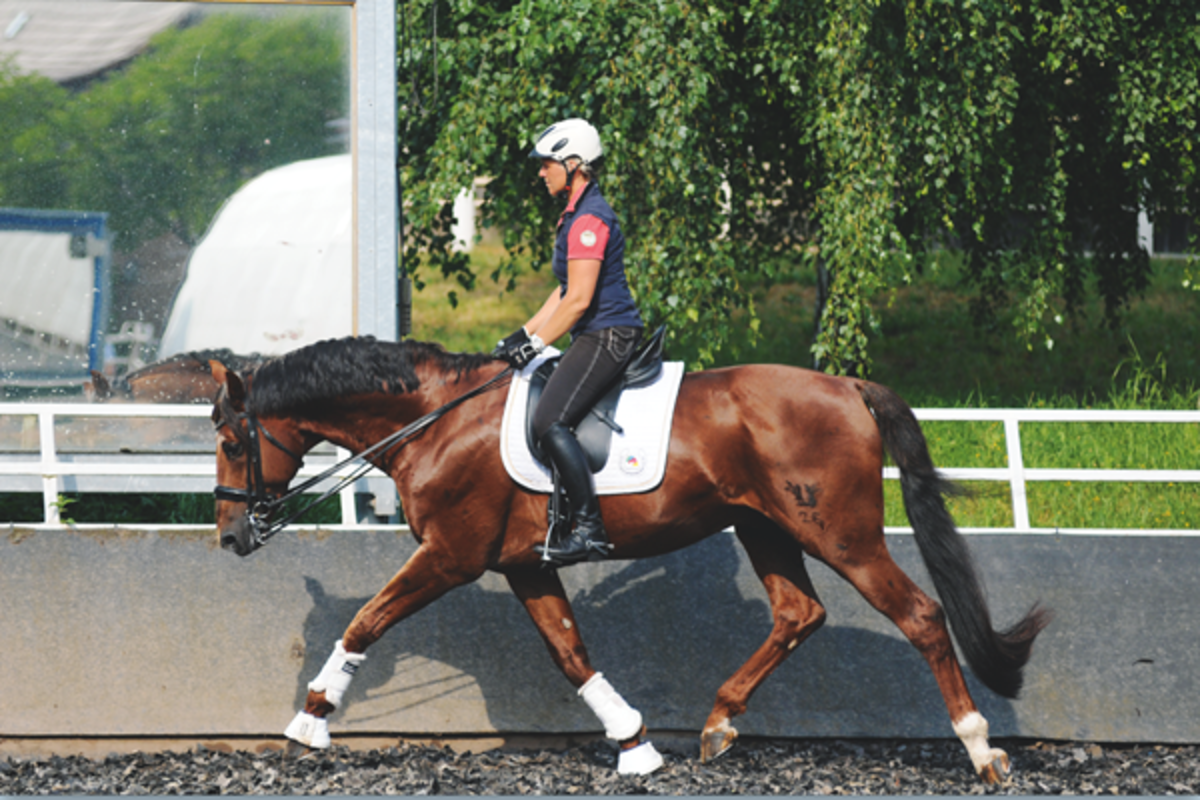
Training program: We frequently include chewing of the reins out of the hand in all three gaits in our training program to give DJ a break from elevation and collection and to check over and over his ability to stretch.
Result: We enjoy the positive reaction of the audience when we show his perfect stretch then continue to work on the movements. It not only looks effortless, it is effortless for me as the rider!
Practical Exercises for a Better Stretch
The Classical Way
- Ride forward and downward in the warm-up, showing the horse the way to the ground. Keep him collected by driving and make sure that the nose stays in front of the vertical and the horse doesn’t get narrower or roll over.
- Ride curved lines and changes of direction so that the horse must balance himself.
- Ride the horse with a soft connection to the hand until he lets his neck fall and seeks the bit.
Give This a Try
- Pick up the horse from where he puts himself and take him with you from there out to the stretch position. Goal: Later switch to the stretch position right at the beginning.
- Let the horse chew the reins out of the hand between exercises at the trot or canter, pick him up again and prepare the next lesson.
- Canter in a light seat with steady connection.
Our Tip
It can take a quarter of an hour or more within a training session to make a minimal amount of progress with young horses or those with previous poor training. Considering the entire training time frame, stubborn cases can take weeks, months or even years. So don’t lose patience or the problem will come back at some point to haunt you, causing you a lot of trouble. That doesn’t mean that you won’t progress in training during this time frame. You can continue normal training and include the stretch now and again in the training session. Don’t ride forward and downward just at the beginning in the warm-up, but let him chew the reins out of the hand throughout the session and test to see if your horse seeks the bit and stretches correctly to the hand. It is especially helpful to experience how it feels on a well-trained horse when done correctly.
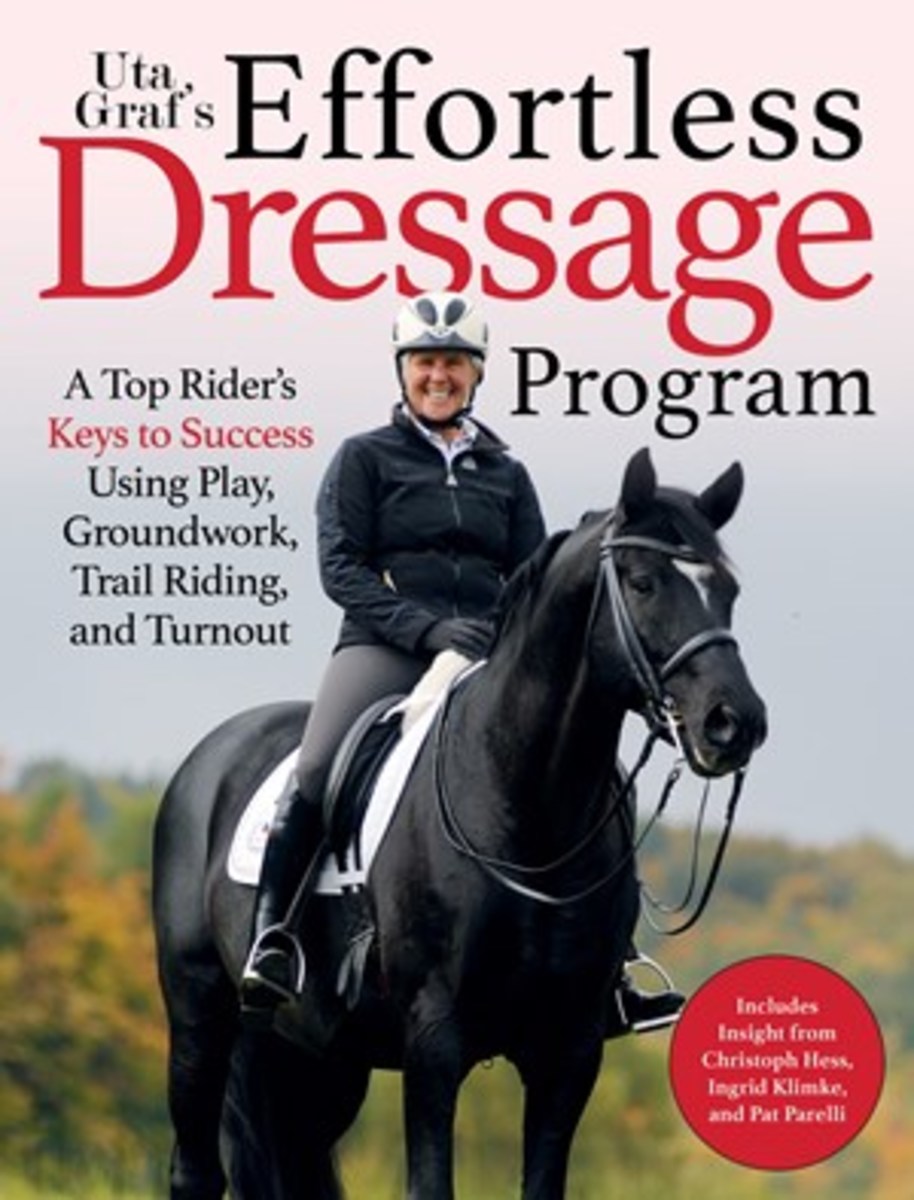
International dressage competitor, trainer and author, Uta Gräf of Germany is well known for her motivated, relaxed and contentedly working dressage horses. With the licensed Holsteiner stallion Le Noir she has won more than 25 Grand Prix classes and in 2011 she placed in the top five at some of the most important European CDIs, including Aachen, earning a place on the German Olympic long list for London 2012. In Gräf’s latest book, Uta Gräf’s Effortless Dressage Program, translated by Coralie Hughes, Gräf and co-author Friederike Heidenhof strive to share what they believe to be “effortless riding”—the ability to ride in balance with proper body coordination and to constantly refine the effectiveness of the aids and work toward using less force when riding. In the following excerpt, Gräf discusses the importance of allowing the horse to stretch, which plays a vital role in achieving effortless riding. Used with permission from Trafalgar Square Books. The book is available from www.EquineNetworkStore.com.


